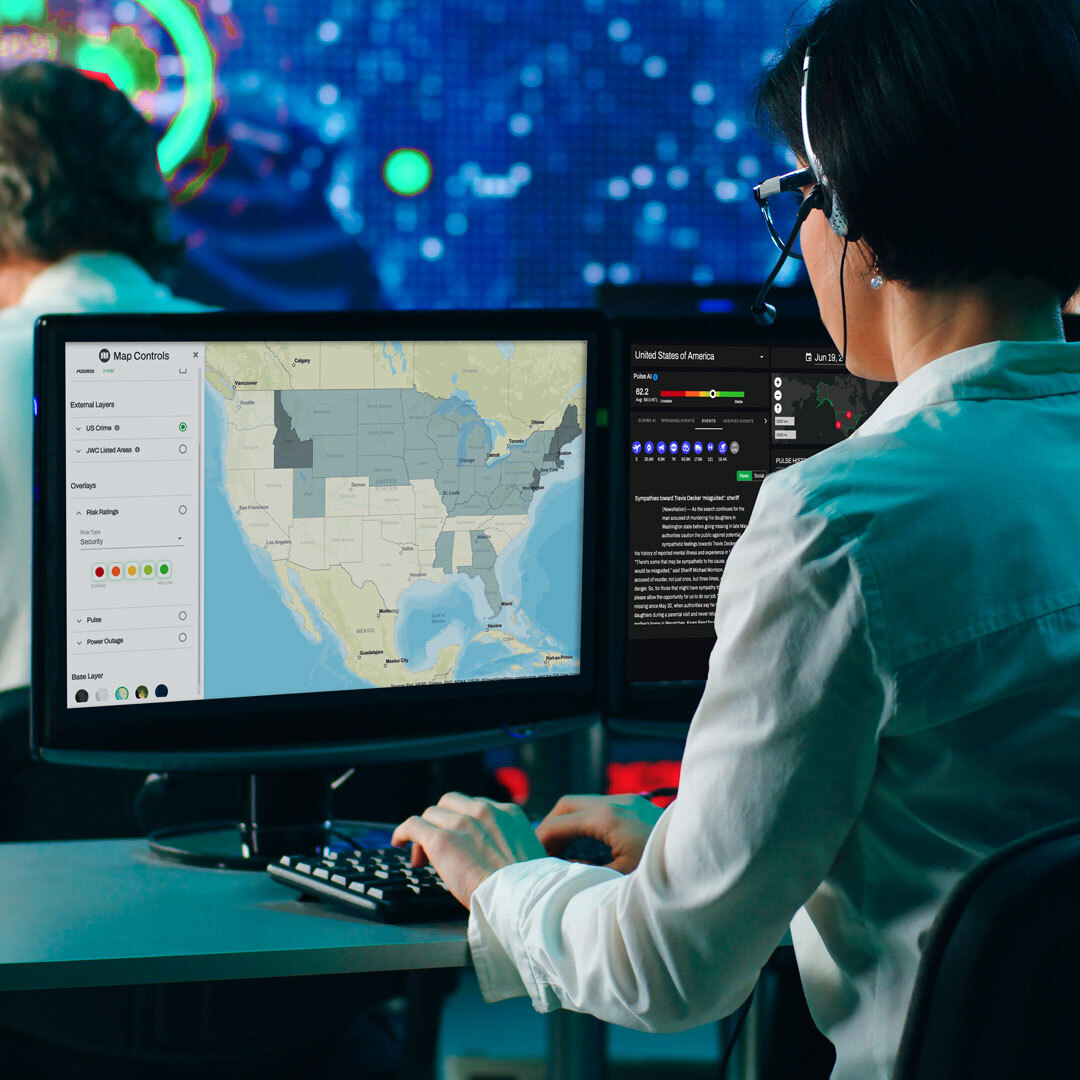Security operations managers are playing an increasingly critical role within their organizations, as leaders are now prioritizing the importance of the business’ Global Security Operations Center (GSOC) and addressing security operations center challenges. Those running the organization’s GSOC are not only tasked with protecting sensitive data, detecting and responding to security incidents, and overseeing the security posture of their organization, they are frequently providing insight and guidance to corporate comms, business strategy, and the finance functions. Not an easy job. Plus as the volume of threat data continues to exponentially grow, and managing the veracity of intelligence becomes increasingly complex, along with continued supply chain challenges, security operations managers are faced with numerous challenges.
Challenge #1: Drowning Under a Deluge of Data
This challenge may be the norm for all security professionals, but it is still one of the biggest pain points of the industry. The data deluge GSOC leaders face each day makes it difficult to discern meaningful patterns, and nearly impossible to monitor activities in all regions that are a priority to their specific organization and leaders. On top of that, this non-stop inundation of alerts and data can lead to alert fatigue. “The challenge with alert overload in IT, especially in operations and security, is that teams monitoring multiple applications and processes become desensitized to alerts, impairing their ability to function efficiently or properly prioritize issues.” In short, this avalanche of data is causing major issues and impeding the success of the security operations manager.
The Solution: While technology has indeed created the problem, it is also the solution when combined with the expertise of humans. AI and ML tools are the only way to parse through data in a timely manner and to offer automated processes that trigger quick alerts based on anomalies in volumes of data. But human analysis and verification must be a part of the process. The people are the ones to train the machines to work more effectively, protect the organization from false data, and ensure that bias does not come into play.
Challenge #2: Navigating Resource Constraints
Another significant challenge for security operations managers is the seamless integration of new technologies and data sources into their business while managing security operations center challenges at scale, all without compromising efficiency or compliance. This is a delicate balancing act, as you need the right people, with the right skills, in place to handle this increased workload. The right team will possess a deep understanding of emerging technologies, vulnerabilities, and attack vectors. Like many industries and functions, there just aren’t enough skilled workers in this fast-growing space. In fact, according to research conducted by ManageEngine, more than 4 in 5 companies admit they have fewer than five security analysts or don’t have enough analysts to run the SOC.
The Solution: One of the most effective ways to combat resource constraints that prohibit a security operations manager from building a truly robust internal team and strategy is to outsource help. The right technology partner will provide solutions that create massive efficiencies, including offering solutions that make it easier to build and disseminate reports, technology that zeros in on the assets that an organization cares about, and the ability for security managers to integrate a myriad of data sources into one central database. This will make it possible to get a quick view on activities around the globe. Third-party partners can also offer security operations managers automation and orchestration tools to help streamline incident response workflows and enable faster detection, investigation, and remediation of security incidents. Striking the right balance between automation and human intervention is paramount to ensure accuracy, compliancy, and control over the response process.
Challenge #3: Validating Data in an Increasingly Complex Threat Environment
With the advent of AI and the increasing amount of disinformation being disseminated, establishing the accuracy of intelligence is a significant challenge faced by security operations managers. Threat intelligence, which provides information about potential and emerging threats, is vital for proactive responses. However, the veracity and reliability of threat intelligence can vary widely – especially as generative chat and deepfakes further infiltrate the web and all of its data sources – making it challenging to determine which intelligence sources are trustworthy and relevant. Relying on inaccurate or outdated intelligence can lead to misinformed decisions and wasted resources.
The Solution: The only way to ensure the data included in reports and analysis that a GSOC manager delivers to decision-makers is accurate is to keep humans involved in the process. While technology innovations like generative AI, AI, and ML are essential to making it possible to keep an eye on all events and disruptions happening around the world, humans are just as essential. The analysts must be part of the process to verify and validate all information and combat potential threats created by generative AI. The right technology partner can be invaluable in assisting a security operations manager with this essential activity. Not only can analysts from a partner ensure that the data included in reports is accurate, but they can offer expert insight and contextualization that will help leaders make strategic decisions with confidence.
Despite Complex Security Operations Challenges, Success is Possible
The security operations manager role is likely not going to get easier as technology evolves, new types of threats emerge, and geopolitical environments continue to change as globalization policies shift over time. But new technology will also have a positive impact on these roles by fostering collaboration, parsing through massive amounts of data, and forecasting potential threats before they happen allowing organizations more time to formulate stronger, strategic decisions helping them to stay ahead of events and incidents in this ever-changing security landscape.
Seerist: Addressing Security Operations Center Challenges
Seerist’s augmented analytics solution combines AI, machine learning, and expert human analysis to deliver trustworthy threat intelligence. By automating the collection of global data, capturing various shifts and swings, and filtering out the noise, Seerist provides valuable insights. These insights are seamlessly integrated into a user-friendly dashboard, ensuring swift and dependable decision-making in crucial moments.
Book a demo to see Seerist’s threat intelligence tools in action or follow us on LinkedIn to learn more about how Seerist helps you stay ahead of the curve.






